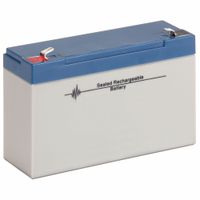- Home
- Lighting
- Emergency Exit Lighting
- Emergency Lighting Accessories Batteries
Emergency Lighting Accessories & Batteries
Emergency lighting accessories and batteries maintain or enhance the performance of emergency lights and exit signs. Exit sign and emergency light batteries replace failing or expired batteries in compatible signs and lights to keep them functioning and compliant with local safety codes. Emergency l .....Read More
Frequently Asked Questions
What are the best types of batteries for emergency lights and exit signs?
How often should emergency light batteries be replaced?
What are the signs that an emergency light battery needs replacement?
How do I test the performance of emergency lights and exit signs?
What are the benefits of using protective covers and shields for emergency lights?
How can I ensure my emergency lighting system is compliant with local safety codes?
What maintenance is required to keep emergency lights and exit signs functioning properly?

